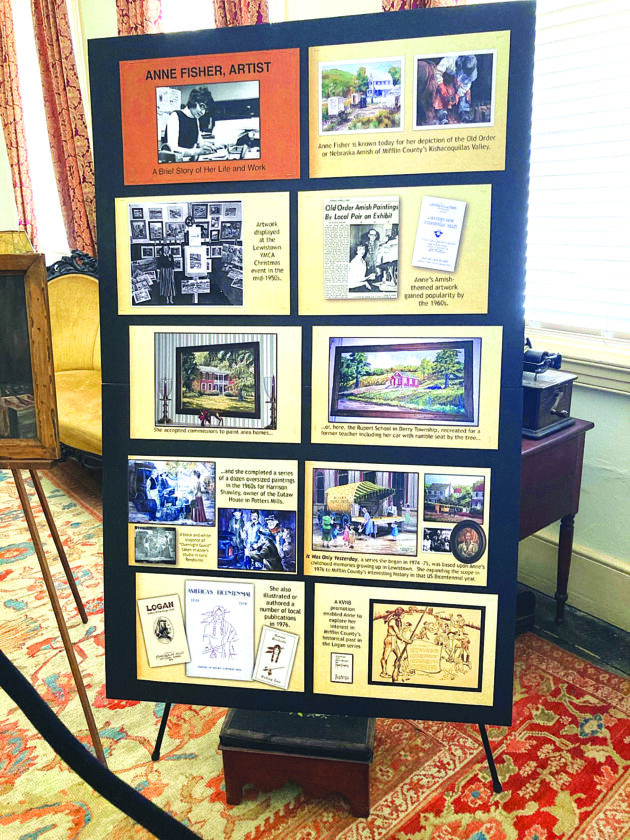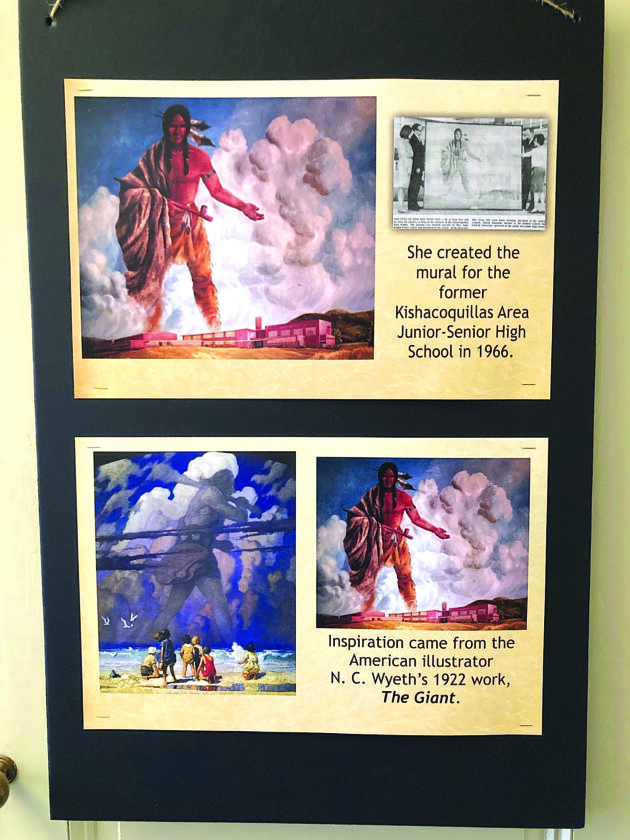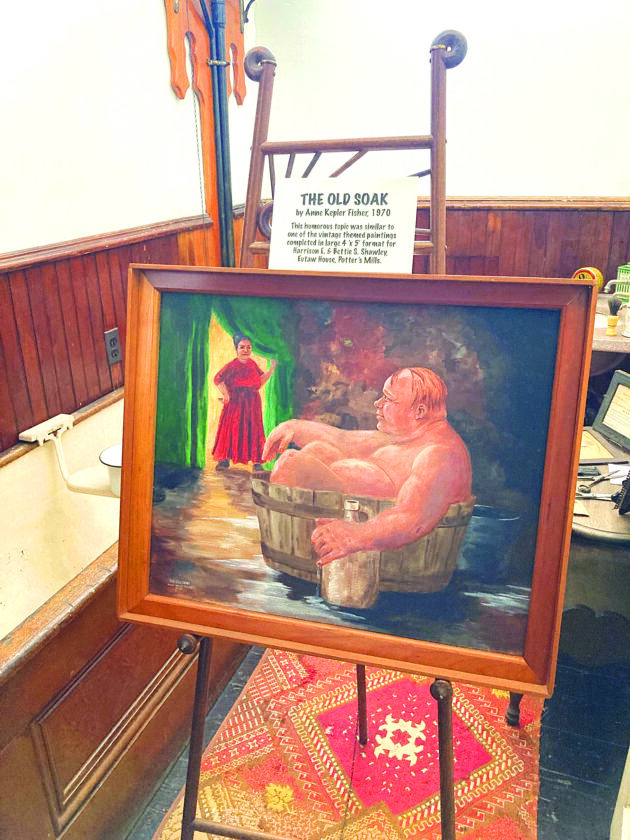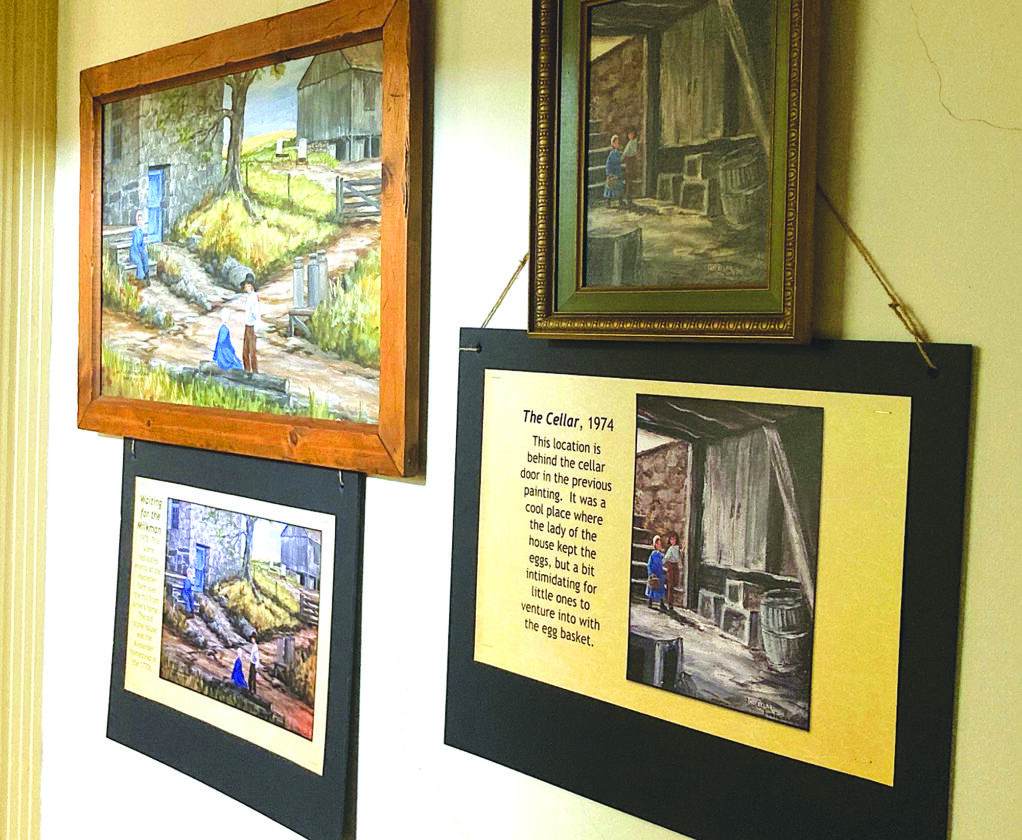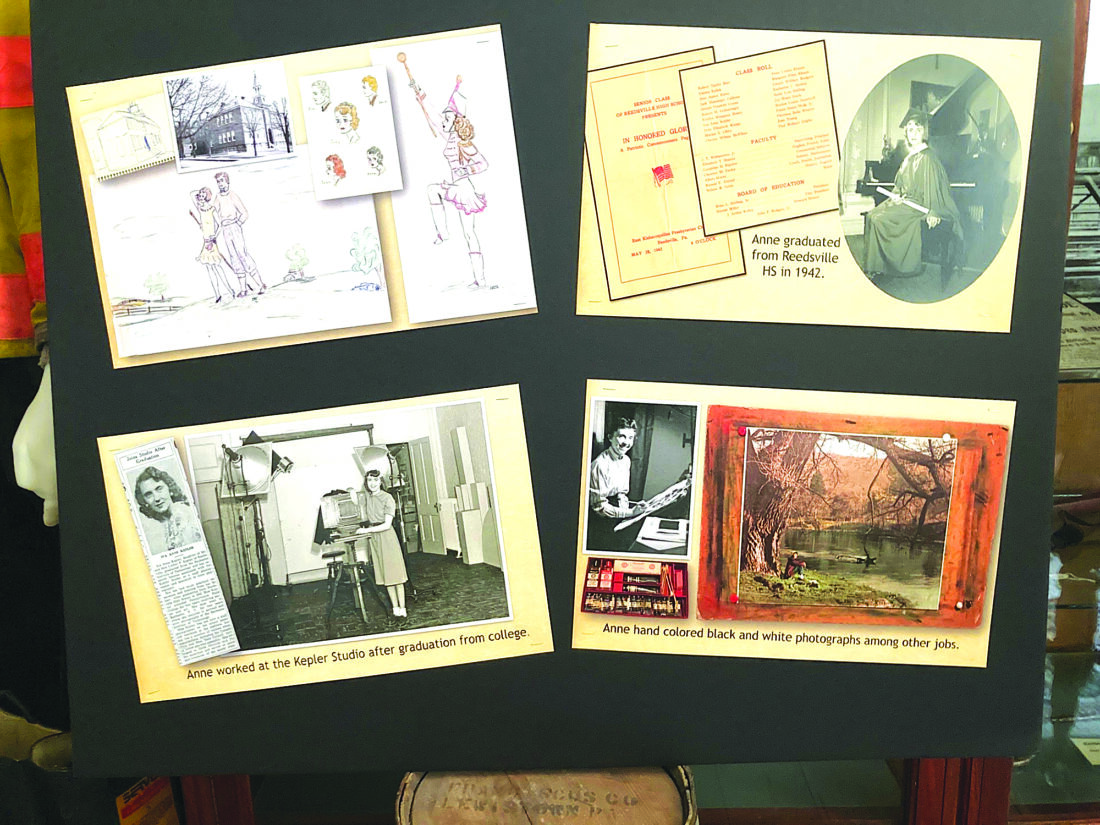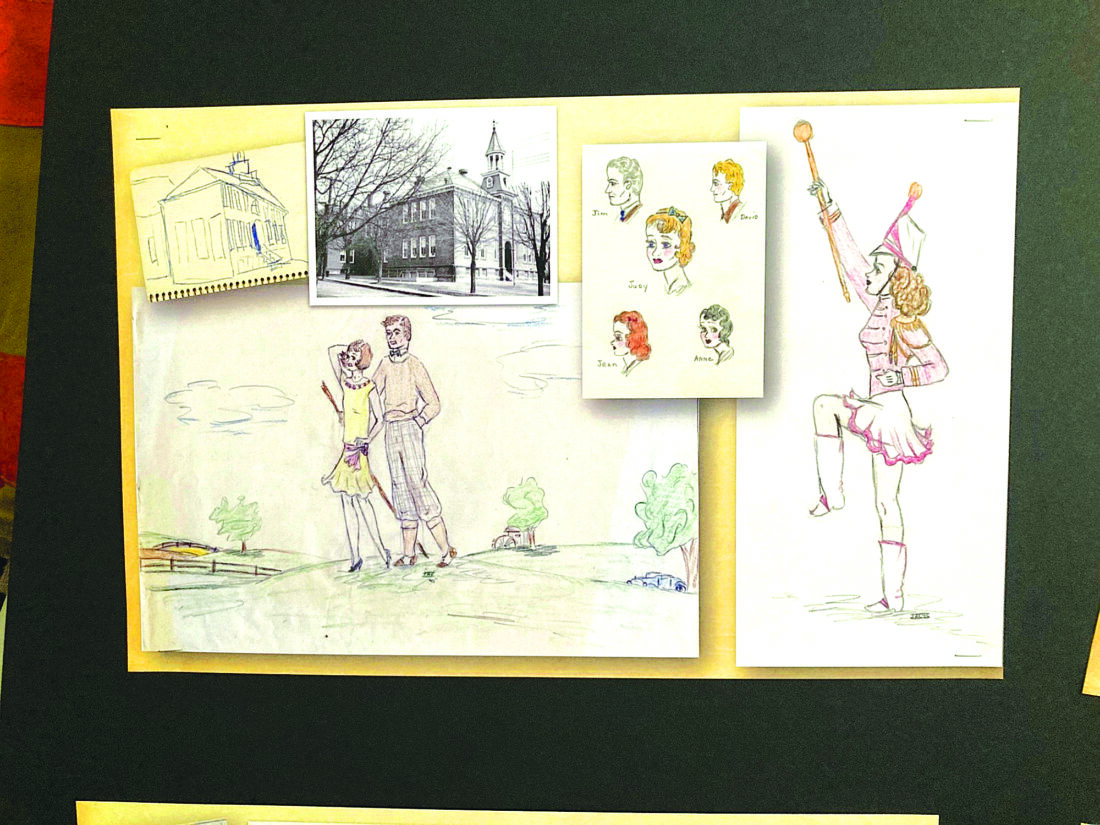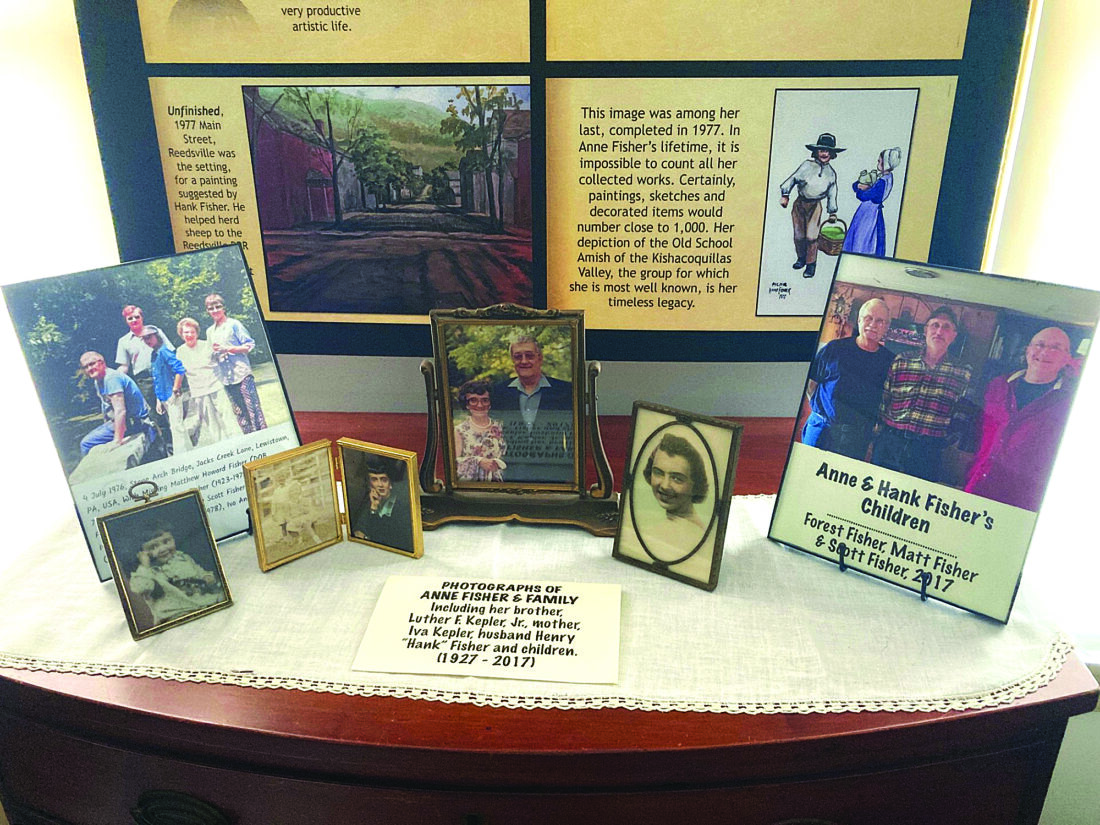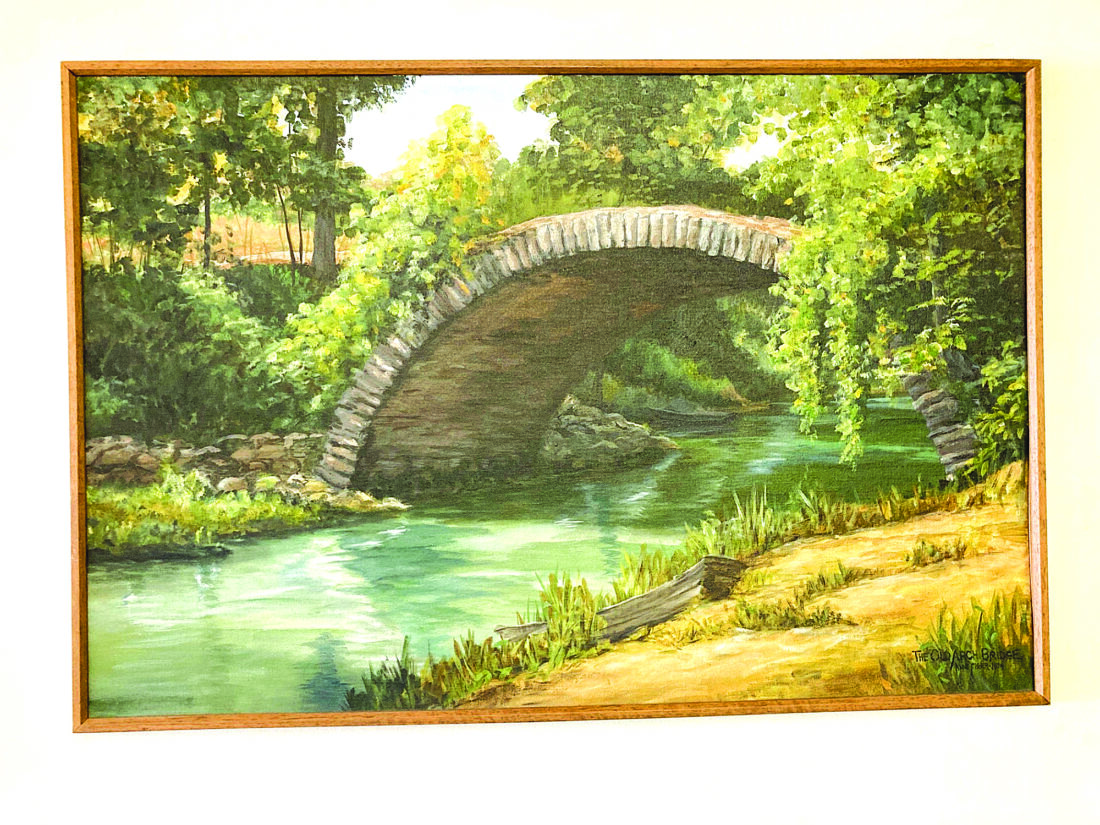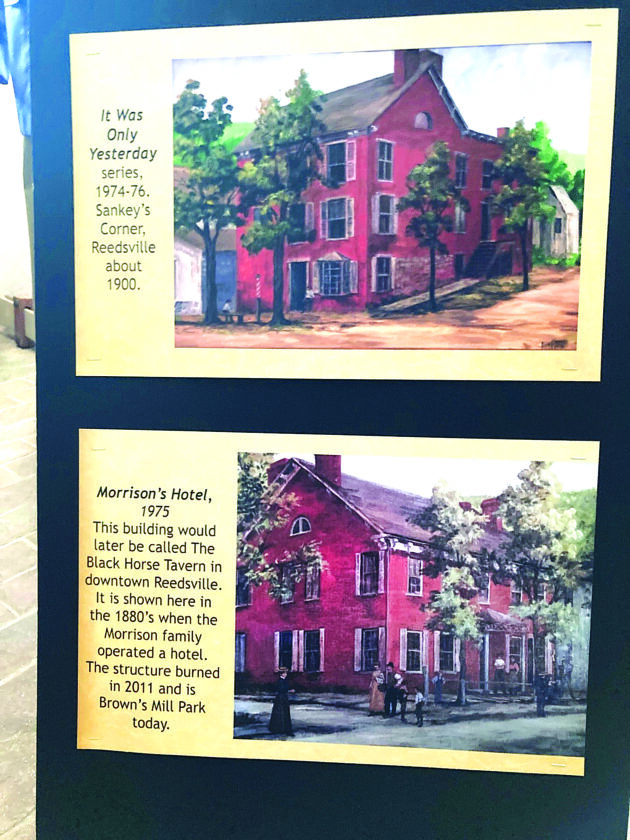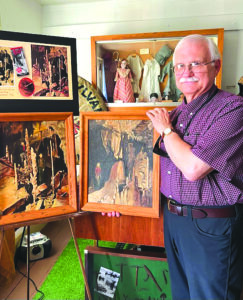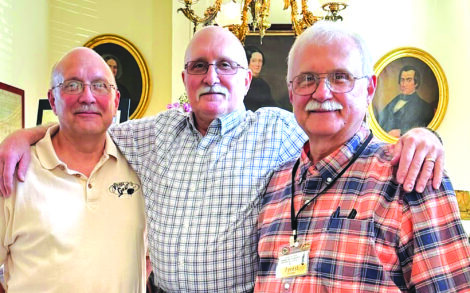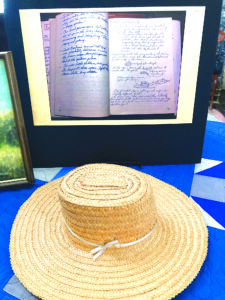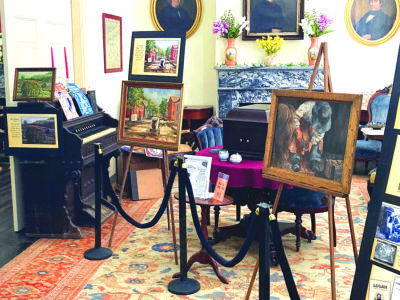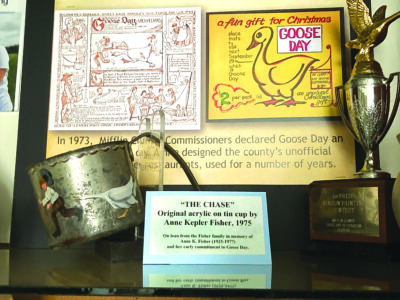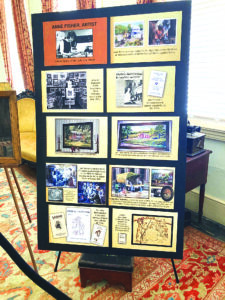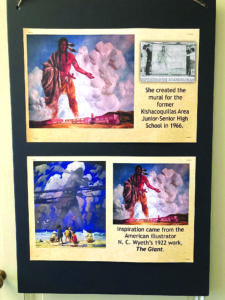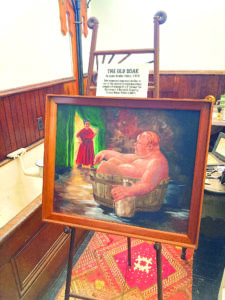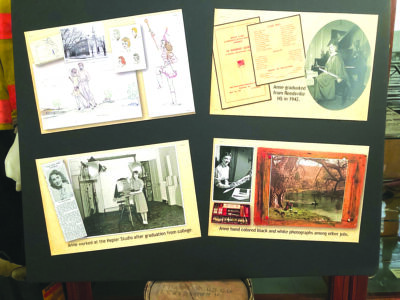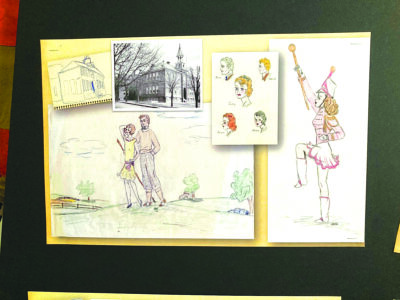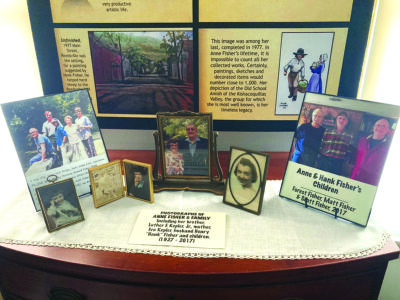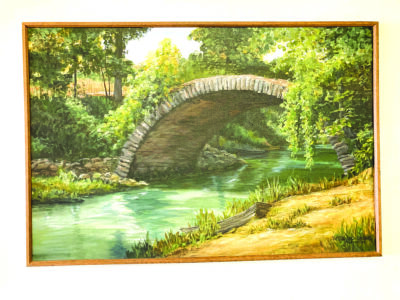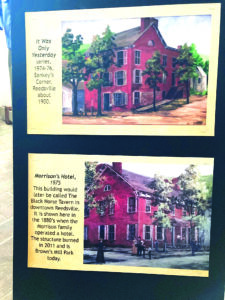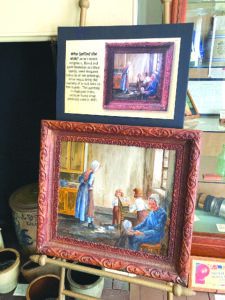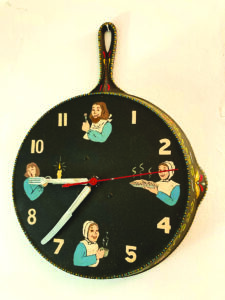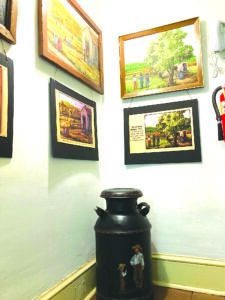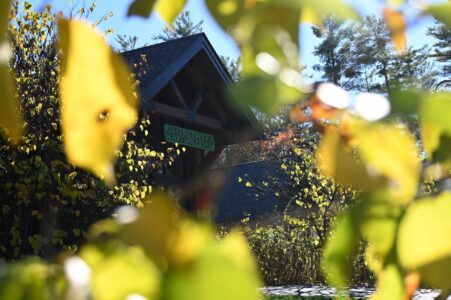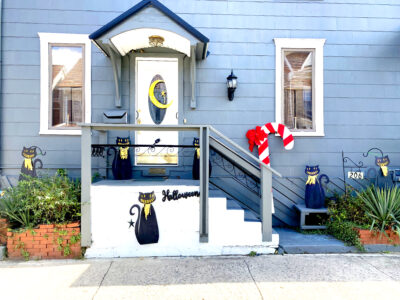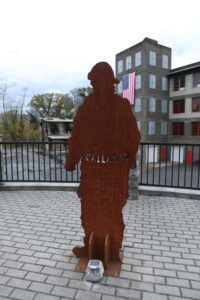‘The Art of Anne Fisher’ on display until Sept. 28
-
Photo by DEE MILLER
Forest Fisher displays the work of Anne Kepler Fisher at the McCoy House Museum in Lewistown.
-
Photo by ANGIE CROSSON
The children of Anne Kepler Fisher and Henry Fisher: From left, Scott, Matt and Forest Fisher.
-
Photo by FOREST K. FISHER
Illustrated artist’s diary kept by Anne Kepler Fisher where she recorded her observations and sketches detailing the culture of the Old Order Nebraska Amish of the Kishacoquillas Valley.
-
Photos by FOREST K. FISHER
Anne Kepler Fisher Exhibit at the McCoy House.
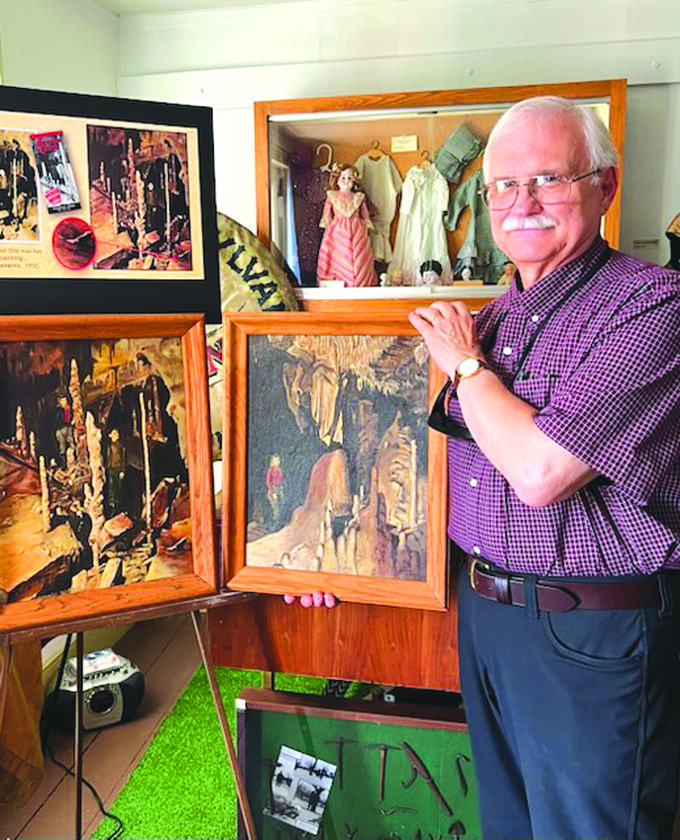
Photo by DEE MILLER
Forest Fisher displays the work of Anne Kepler Fisher at the McCoy House Museum in Lewistown.
[Editor’s Note: Forest Fisher also contributed to this story].
LEWISTOWN — Through her artwork and the written word, the late Anne Kepler Fisher intended to document the Old Order of Amish of Mifflin County’s Kishacoquillas Valley.
From spring plowing to summer food stands, fall harvest to wedding season and even the chores of winter, the Reedsville artist longed to help her community remember and appreciate, what seemed to Anne, as the Amish’s fast fading way of life.
Poignantly, Anne’s own life would be cut short, but her artistic legacy lives on locally almost 50 years after her death. To honor her, “The Art of Anne Fisher,” which includes her sketches and notes and original paintings can be found throughout the McCoy House Museum until Sept. 28.
“It is a fitting legacy to a local artist who wanted her community to remember a unique culture in its midst,” said son, Forest Fisher, a volunteer for the Mifflin County Historical Society which operates the museum. “The Amish art of Anne Kepler Fisher remains a part of the Juniata Valley’s unique and interesting heritage.”

Photo by ANGIE CROSSON
The children of Anne Kepler Fisher and Henry Fisher: From left, Scott, Matt and Forest Fisher.
Forest and his younger brothers, Matt and Scott, have been at the exhibit this summer and will continue to be present to meet and greet visitors as they honor their mother.
In the spring of 1977, Anne contemplated a return to a project, “Some Children of God,” she had started in the early 1950s. It was part of her quest to document the Amish, a unique culture which frowned upon being photographed.
Coming from a family of photographers, Anne accepted the challenge of painting the Amish society. Her father, Luther F. Kepler Sr., and uncle, James A. Kepler, operated the Kepler Studio and Gift Shop in Lewistown for more than 60 years.
Born in Lewistown, Anne was classically trained in photography and art at Rochester Institute of Technology in Rochester, N.Y., and at Penn State. After graduation, she worked at the family’s photography studio as a colorist. Anne had the peculiar task of colorizing black and white photographs with translucent oil paints in the late 1940s and early 1950s. It was also around this time when she became serious about oil painting, a technique she learned in college.
Living in close contact with their Amish neighbors, who farmed nearby, helped her portray the images throughout her artistic career. “Despite her training, it wasn’t the camera that recorded the Amish way in her work, rather her sketch pad and pencil and from there to oil and canvas,” Forest added. The seeds of “Some Children of God” were sown during these years.
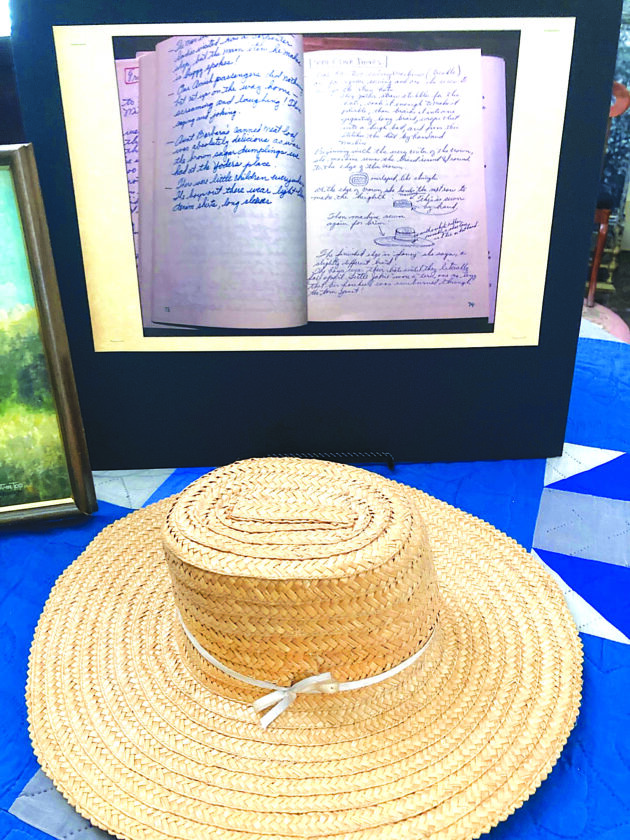
Photo by FOREST K. FISHER
Illustrated artist’s diary kept by Anne Kepler Fisher where she recorded her observations and sketches detailing the culture of the Old Order Nebraska Amish of the Kishacoquillas Valley.
Eventually, the casual acquaintance developed into friendship with the neighbors. Anne and her husband frequently drove the Amish on an assortment of errands, going to places like an orchard to buy fruit trees, to a medical clinic in Philadelphia or to an Amish book seller in Big Valley.
Anne kept a journal of these “adventures,” as she called them, and once commented that writing about these events heightened her sense of authenticity she portrayed in her artwork. “Her ideas for paintings frequently arose from visits to the neighbors, too, like butcherings, delivering Christmas gifts to the neighbor’s ever growing brood, buying eggs or just stopping for a visit,” Forest said.
Those same Amish neighbors would occasionally stop by Anne’s home studio to ask about the Amish men she was painting. Forest said it was almost sport for the Amish neighbors to see if they could recognize the image of one of their friends or relatives, perhaps depicted behind a plow or shoeing a work horse or whatever else Anne’s canvas captured as it rested on her easel.
Through the 1960s, the popularity of her artwork grew and eventually she exhibited at the Central Pennsylvania Festival of the Arts during the summer and sold locally throughout the year.
By the 1970s, her work was so sought after, it seemed to sell as fast as the paint would dry. Commissions took up a great deal of her time as clients would bring canvas, pieces of tinware or other items to be decorated with an Amish scene or motif.
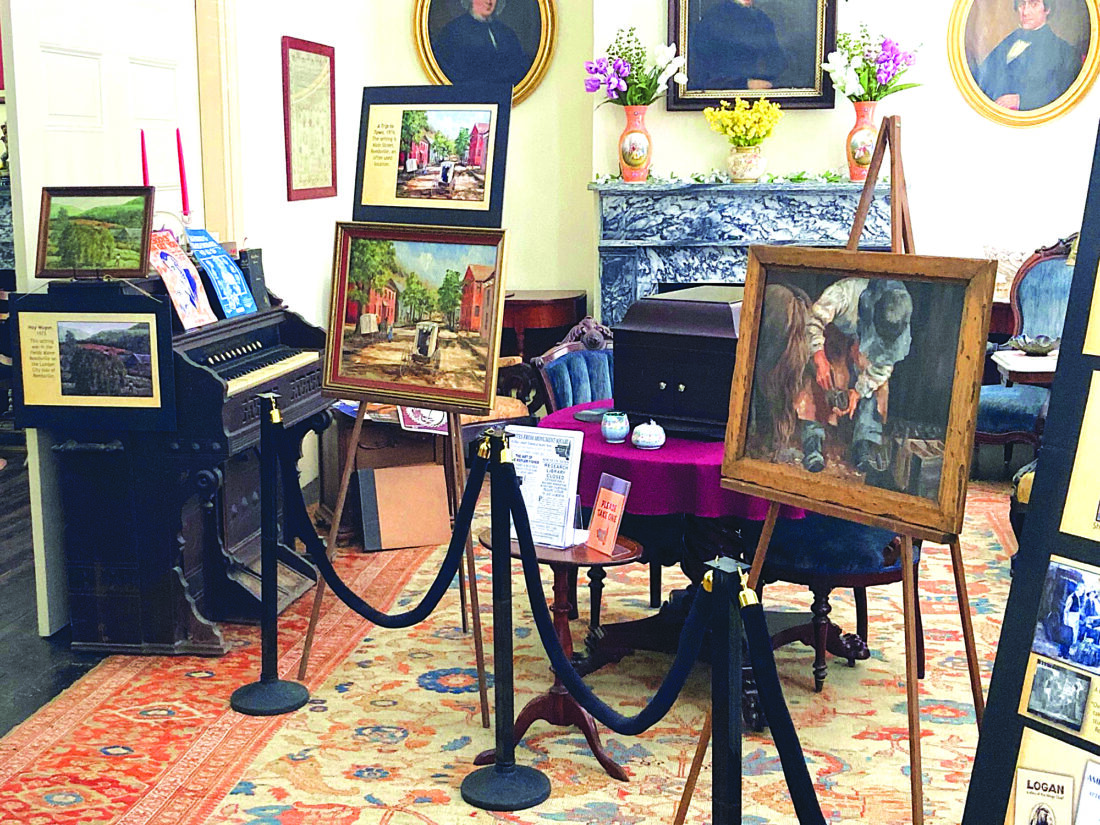
Photos by FOREST K. FISHER
Anne Kepler Fisher Exhibit at the McCoy House.
Another of her projects featured prints and a booklet on the life of Logan, the Mingo leader, for the Kishacoquillas Valley National Bank and another project including Amish and non-Amish scenes of Big Valley.
All was not well for Anne. Health problems stretched her nearly to the breaking point as she was increasingly worried about her husband who was fighting cancer discovered in 1975. Her own health deteriorated, but she wouldn’t slow down, “I’m just a little tired,” she often said, “I’ll catch 40 winks and be fine.” But her health was not fine.
A stroke caused by a spreading lung cancer struck Anne in October 1977. She never picked up a brush again, passing by month’s end, at the early age of 52. Her project, “Some Children of God,” was never completed as she envisioned it.
Anne had established a reputation as a painter of the Kishacoquillas Valley, creating literally hundreds of paintings done in oil or acrylic, in all sizes and shapes.
“A myriad of sketches were done in charcoal, pencil, or pen and ink, plus decorated tinware,” Forest said. “She held exhibits at local banking institutions and once had an exhibit at the State Museum in Harrisburg with her brother Luther, Jr. She wanted her art to be accessible to a broad variety of people, and it was.”
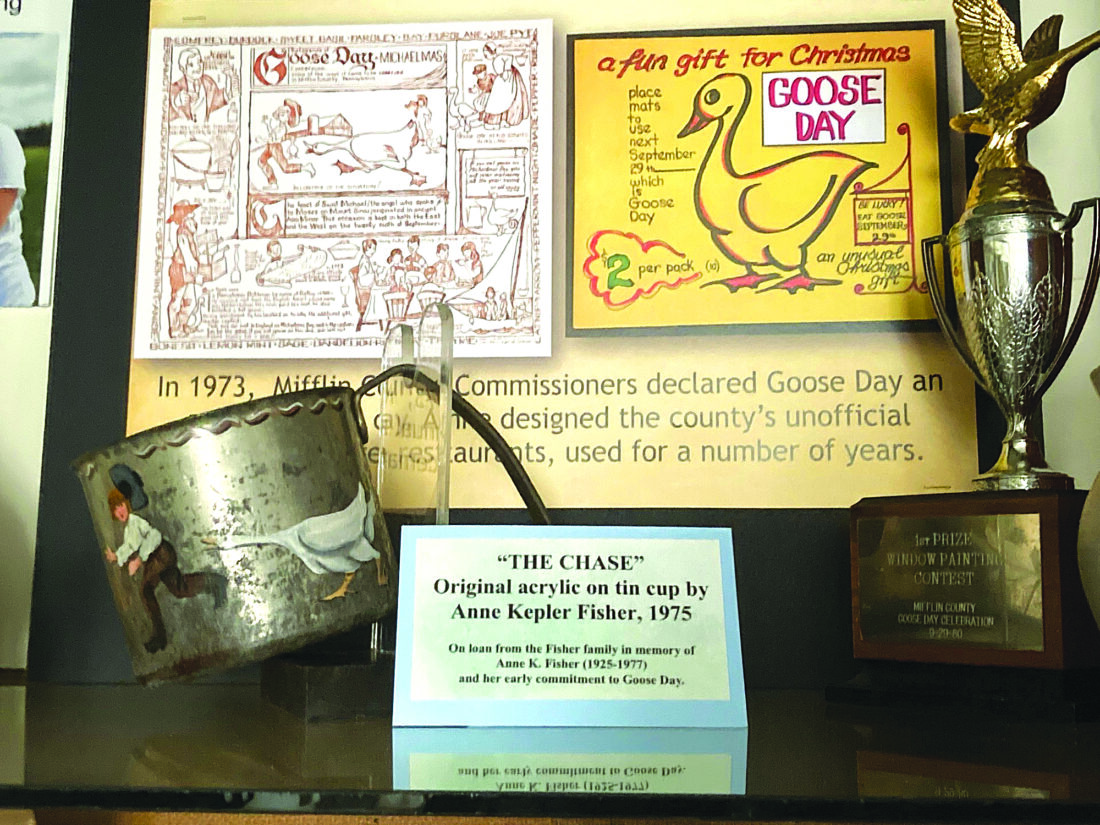
Forest considered his mother a modest person, who always hated to “charge too much” for her work. Her pieces usually sold for under $100, but most often, much, much less. However, in 2003, one of her paintings sold for $2,000, a fact that would be both pleasing and a bit embarrassing to her.
In the late 1990s, some 20 years after her death, the Mifflin County and Centre County historical societies held retrospective exhibits of her art. Many central Pennsylvanians allowed their cherished works to be placed on display.
“Some Children of God,” though not exactly as she envisioned it 50 years ago, actually remains today in the living rooms and offices lucky enough to possess her original artwork, Forest said.
“It is a fitting legacy to a local artist who wanted her community to remember a unique culture in its midst,” he added.
The McCoy House Museum is open 1 to 3 p.m. Sundays through Sept. 28; 6 to 8 p.m. on First Friday, Sept. 5; and 5 to 9 p.m. on Lucky Friday, Sept. 26. Admission is free.
